| Zeitschrift Umělec 2000/1 >> Kurátor a kulturní politika (rozhovor s Helaine Posner) | Übersicht aller Ausgaben | ||||||||||||
|
|||||||||||||
Kurátor a kulturní politika (rozhovor s Helaine Posner)Zeitschrift Umělec 2000/101.01.2000 Martina Pachmanová | q & a | en cs |
|||||||||||||
|
"Helaine Posner is an independent curator and writer living in New York. From 1991-98, she was Curator at the MIT List Visual Art Center, Cambridge, Massachusetts where she organized exhibitions of contemporary art and wrote the accompanying catalogues. She served as Director of the University Gallery at the University of Massachusetts at Amherst (1984-88) where she had previously been Curator (1981-84). Her exhibitions of note include Mirror Images: Women, Surrealism and Self-Representation (co-curated with Katy Kline and Whitney Chadwick in 1998), which traveled to the Miami Art Museum and the San Francisco Museum of Modern Art and The Masculine Masquerade (1995) for which she co-edited a book published by MIT Press. Posner is also the author of a monograph on the artist Kiki Smith published in 1998 by Bulfinch Press. In 1999, she was United States Commissioner for the Venice Biennale where she organized an installation by artist Ann Hamilton.
Posner earned a Bachelor of Arts at Georgetown University and a Master of Arts in Art History and Museum Studies at George Washington University, both in Washington, D. C. You were a co-commissioner of Ann Hamilton’s 1999 Venice Biennale project for the American pavilion. The procedure for the selection curators or artists for this major presentation of contemporary art differs from country to country. How is it in the U. S., and what are the criteria for selecting artists? There is an organization called the United States Information Agency (USIA), and their office runs the selection of the national representation in Venice. Then, there is the Fund for U. S. Artists at International Festivals and Exhibitions which is a coalition between the USIA, The National Endowment for the Arts, the Rockefeller Foundation, and the Pew Charitable Trusts, and those are the entities that provide the funding. A panel of curators, museum directors, artists and critics is assembled to review the applications by both affiliated and independent curators. These applications are solicited from across the country. As you know, in recent years the U. S. pavilion was monographically devoted to one particular artist. When Katy Kline and I proposed a project with Ann Hamilton for this year’s Biennale, it was not based on any sense of the Fund’s preference, but on our complete belief in this artist’s work. I have known Ann’s work for almost ten years now, and I am convinced she is one of the most remarkable younger American artists. Her work is sensually, intelectually and emotionally very engaging, and I don’t know many artists whose work is so full and complete. In 1992, I curated an installation of Ann’s work at the List Visual Arts Center (LVAC), and since then I wanted to propose a VB project with her, but for several years she told me that she is not ready. This time, after making several visits to Venice, Ann had a very distinct reaction to the architecture of the American pavilion. This pavilion is a neo-classical building that reminds one of Thomas Jefferson’s home in Monticello, and is closely connected with the origins of American democracy. The question of what it means for architecture to embody a certain political idea was a point of departure for the project. We did not want to show pre-existing work, because the site presented an interesting challenge, and, moreover, Ann’s best works are site-specific installations. Harald Szeemann conceived the 1999 Venice Biennale as “dAPERTutto,” trying to break down the hierarchy and to emphasize the role of young artists and women in contemporary art. Did this aspect play any role in your decision? No, not at all, because we never even heard him say that until last January, and we proposed our project almost a year before. However, my reaction to Szeemann’s emphasis on women artists was twofold, that this is a wonderful thing and a great chance to see more work done by women, but also that it’s behind the time. Women have been part of the mainstream for quite a while. Isn’t it remarkable after all those years that acknowledging this fact is still an important thing for the VB chief-curator? A lot of other people have thought it is a groundbreaking gesture, but it just seems to me slightly lagging. Well, that very much depends on from what perspective and in which socio-geographical context the presence of women in art and reflection of their work is perceived. There are still many countries where it is not such an obvious thing at all. But let’s go on. The Venice Biennale certainly does not provide an ultimate and conclusive picture of contemporary art, but it can not be denied that, unlike any other show, it brings together artists from all different parts of the world. Can one make any conclusion about the state of art from this megalomaniac show? And, if so, how is art at the end of the twentieth century? That question is inevitably asked at an exhibition like this because it is happening in 1999. I feel quite reluctant to make totalizing statements about contemporary art. However, there are certain things you can observe, such as an emphasis on video and photography, and the much greater presence of women artists and minority artists on the contemporary art scene in general which, I believe, is not only true of the Biennale. I think that in our information age there also is a strong desire to be more international and multi-ethnic. All of these comments might be rather superficial because they are simply observations of things that are changing sociologically. As to prevalence of video and photography in contemporary art, they are very seductive and engaging media. They reflect our experience of taking in a lot of information very quickly, of being entertained which certainly doesn’t diminish their intellectual qualities. Moreover, moving images and sound fits beautifully into the reality of our lives. In terms of installation, which seems to occupy a prominent position as well, it is a similar thing—it can be very spectacular because it surrounds a viewer, and it doesn’t require concentration on a single image. I personally have been involved in installation art for almost twenty years, and I still think it is fascinating. It relates to the way we live; it creates a whole environment; it reinforces the physical experience, and could engage your mind as well as your senses. The Venice Biennale is also about political and economical power. In this context, let me ask you a more general question. Since the mid-1990s, many American politicians and public figures have been calling for art to support itself in the market place, and have found a lot of support by the public. This voice of conservativism which, in my opinion, doesn’t call for anything but the diminishment of art’s critical voice have significantly influenced the major trend in American museums. The museums present “safe” and unirritating images, focus on historically challenged values rather than the risky business of contemporary art, and conceptualize their exhibitions according to the mainstream taste to make them “blockbusters.” While the state’s support in various forms has a long tradition in most European countries, the United States’ system is more free-market oriented. What do you think about the recent marketing and market-oriented curatorial and educational strategies of major American museums, and what is the mission of public foundations in such an advanced-capitalist context? This is a very complicated and delicate question. During the last twenty years, when I was involved in the arts, I certainly could see some major changes in the U. S. cultural politics. In the 1970s, the National Endowment for the Arts was an exemplary institution for supporting the non-profit, more difficult, more challenging, and non-mainstream work that, otherwise, would never find funding. NEA worked like this for many years, and it received a lot of respect. In the 1980s, however, NEA came under attack by the Republican right. It all was very cynical and disturbing, but this attack made NEA much more careful, its funds were limited, and a fear of funding anything provocative started to dominate in this institution. Even though NEA continues to fund some interesting projects, it’s become more conservative. This Reagan-era conservativism is still around. Corporations play quite a big role in the arts, and, clearly, their interest is receiving high and positive visibility. Corporations as sponsors don’t want to be connected to any scandal. The individual funding, which is relatively strong in the U. S., is much more complex and its analysis would require a case by case examination. And then there is the entire network of commercial galleries, and that, of course, is about business and not too many of them are really risk-taking. Even though it is not so apparent from outside, the private galleries and collectors do play an important role for the major museums for they control the market, and thus indirectly dictate the hierarchy of art values. Moreover, major collectors are at the museum boards. The functioning of the major museum is a very complex interaction between politics, market, society, and art. I would say that the overall current tendency of major museums in the U. S. is the result of this situation, and the majority of new, challenging and radical projects usually take place at the university galleries and alternative spaces. You are a risk-taking curator. You have been dealing with many “explosive” issues: sexual and gender identity, body politics, ethnicity, violence, war… All these issues are one way or another related to power inequality, hierarchy and dominance. How do art and politics intersect? Can art play a social and political role without becoming an ideological propaganda? The art has to succeed as art, but there is no subject that should be taboo for art. The idea that art should be just soothing and beautiful is itself a 19th-century ideological construct. Certainly, it might as well be, but any subjects that we deal with in our life experience are subjects for art. Whether it’s gender issues, whether it’s politics, whether it’s war. For me the arts’ engagement with the world is an extremely important and interesting part of my curatorial practice. Many exhibitions that I curated while working at the LVAC, such as Corporal Politics (1993), The Masculine Masquerade: Masculinity & Representation (1995), or Mirror Images: Surrealism & Self-Representation (1998), to name a few, were about people and their social situations. One doesn’t have to call these exhibitions a priori “political,” but the critical approach incorporated is certainly far from the neutrality of a purely aesthetical approach. When artists address various issues critically, the better the chance that the art will become a more substantial part of our lives. In your essay Separation Anxiety you wrote: “The war on the body and the experience of disconnection it engenders is most often revealed in the work of female and gay male artists. From perspectives outside the white male power structure they are in painfully privileged position to comment on and critique the politics of division, exclusion and loss.” (in: Corporal Politics, catalogue of List Visual Arts Center, MIT Press, 1993). Are minorities sufficiently represented in contemporary art institutions? How is such representation to be guaranteed without accepting the humiliating quota, and running “affirmative action?” And, last but not least, does the better visibility of minorities imply also an understanding of them? Isn’t the criticism taken from the “painfully privileged position” of the Other damaged when minorities enter the official institutions? From my liberal perspective, it is important to include all voices. Not just because it is the right thing to do, but because art then becomes much more interesting. For many years, you primarily had one point of view, dominated by white male artists and there is great work that emerges from that tradition. But as soon as you include women and feminists, you reach a different and new perspective. You include artists of color, and you get their perspective. All of a sudden, the whole discourse will necessarily be different because the life experiences of all these minorities are different, and this diversity enriches us all. To represent “other” traditions just to fulfill a quota makes no sense, but that certainly shouldn’t be your motivating factor. One of the functions of a curator is to be an interpreter: he/she has the authority to select the artists but it is also a huge responsibility to build a bridge between the art work and the public, to provide people a chance to understand what was unfamiliar and unknown to them before. However, to answer your question, I think that minorities exhibiting in museums of the Western type that are still dominated by men don’t sell out, and the presence of formerly peripheral voices always helps us to reconsider the role and function of such institutions. It’s not so much about integration as about transformation. The problem is that many mainstream institutions remain blind to cultural variety and follow more comfortable paths because they know that a change could be very painful. While the visibility of minorities of color—Asians, African-Americans, or Latinos—has increased enormously in American galleries and museums, many other ethnic minorities who are, historically, part of the Western civilization receive much less attention. Even though there was a short-term craze for Eastern European, and mainly Russian, art following the disintegration of the Communist block, the interest gradually disappeared. There seems to be very little attempt to introduce the cultural tradition of these nations to the American public. The white minority finds itself in a void—it is not different enough to raise enough interest, and, at the same time, it is exotic enough not to be part of the mainstream. Is this a remnant of Cold War cultural politics? A consequence of the post-colonial discourse? Unfortunately, a lot of this has to do with fashion and a very superficial kind of knowledge. But there seems to be two different issues here, one is the representation of the culture and art of non-Western white people living outside of this country, and the other is the representation of those who live in this country. In the U. S., there are certain social and cultural obligations to other American citizens whatever part of the world they came from. To show culture from other countries is certainly very important, but I beliefe it is probably a later concern that needs more time. However, I don’t think it is not a lack of interest that causes this disequilibrium in the case of Eastern Europe, but rather our difficulty understanding art from that region in its complexity. Eastern European art might be as confusing for us as the war in former Yugoslavia, which means that just like in the case of Bosnia and Kosovo we need someone else to help us to understand. It would be best and far more interesting if an Eastern European curator took the initiative and organized a well-done, thought-through and complex project to be offered to some institutions in the U. S. A lot of artists you collaborate with are women and gender issues have been among the prominent topics in your work. What was in your opinion the biggest impact of feminism on art and writing art history? It was artists, critics and art historians who contributed to the recognition of women in art in the 1970s. I believe that it was the introduction of the personal voice that was the most significant and that influenced art for next two decades. The personal perspective led us away from the formalism in both making works of art and its critical analysis. Art was finally contextualized in the social, political and also private spheres. An important part of feminism was the integration of life into art. For me, this was a great gift for it is much richer and more meaningful way to look at art. Your curatorial work has been dealing with both historical periods as well as contemporary art, and even your writing is deeply informed by new tendencies in art history and visual studies. However, having a recent chance to talk to many other curators and academics in art institutions in the U. S., I got the feeling that there is often a huge gap between the two in this country. They seem to talk two different languages, literally as well as metaphorically. Many curators put art history and theory aside, while many academicians have no direct relationship with the works of art they contemplate. Is this observation true? And if so, then, what is the reason of this “division of labor”? There is a historic conflict between curators and art historians in this country that is much less usual in Europe. This might sound very black-and-white, but American academics believe that they are the ones who are the most serious and have done the most intensive research in art, and that the curators simply put exhibitions together too quickly—especially when it comes to contemporary art. But things are much more complicated. To do art historical research is about having time and perspective, a safe distance, whereas to curate contemporary art shows is about evaluating and responding more immediately, which is very problematic, but it also makes the work very exciting and challenging. "
01.01.2000
Empfohlene Artikel
|
|||||||||||||
|
04.02.2020 10:17
Letošní 50. ročník Art Basel přilákal celkem 93 000 návštěvníků a sběratelů z 80 zemí světa. 290 prémiových galerií představilo umělecká díla od počátku 20. století až po současnost. Hlavní sektor přehlídky, tradičně v prvním patře výstavního prostoru, představil 232 předních galerií z celého světa nabízející umění nejvyšší kvality. Veletrh ukázal vzestupný trend prodeje prostřednictvím galerií jak soukromým sbírkám, tak i institucím. Kromě hlavního veletrhu stály za návštěvu i ty přidružené: Volta, Liste a Photo Basel, k tomu doprovodné programy a výstavy v místních institucích, které kvalitou daleko přesahují hranice města tj. Kunsthalle Basel, Kunstmuseum, Tinguely muzeum nebo Fondation Beyeler.
|







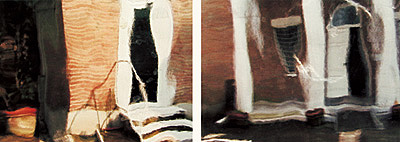
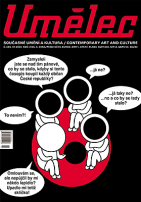























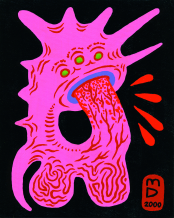
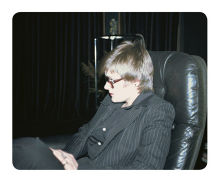
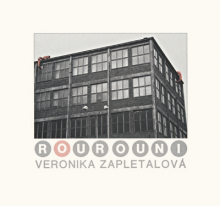


 We Are Rising National Gallery For You! Go to Kyjov by Krásná Lípa no.37.
We Are Rising National Gallery For You! Go to Kyjov by Krásná Lípa no.37.
Kommentar
Der Artikel ist bisher nicht kommentiert wordenNeuen Kommentar einfügen